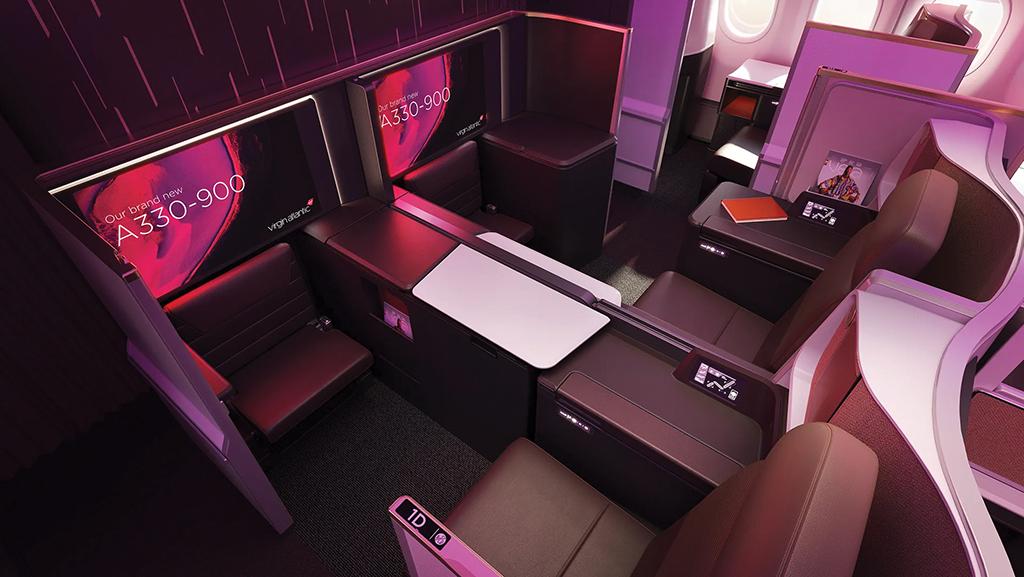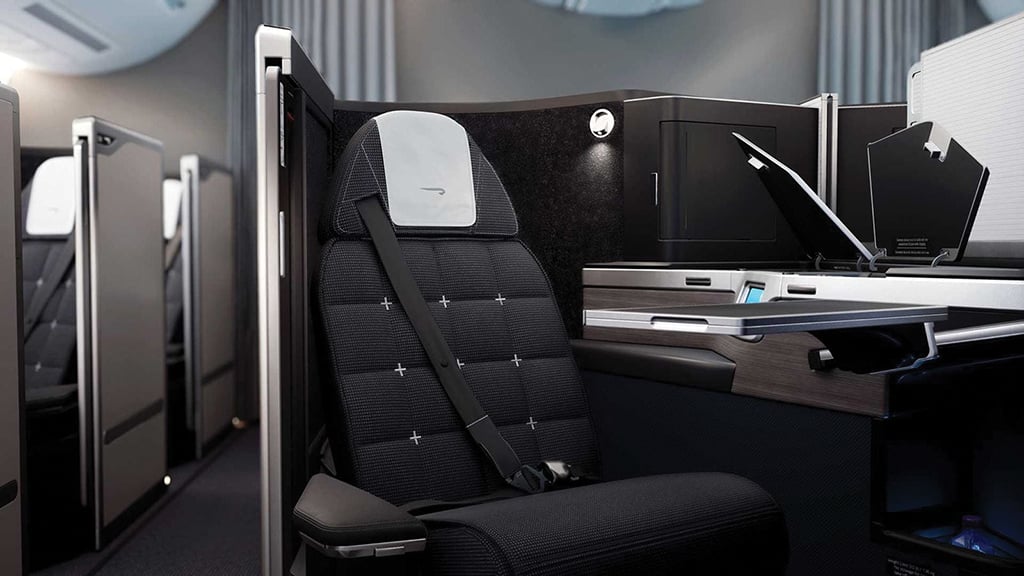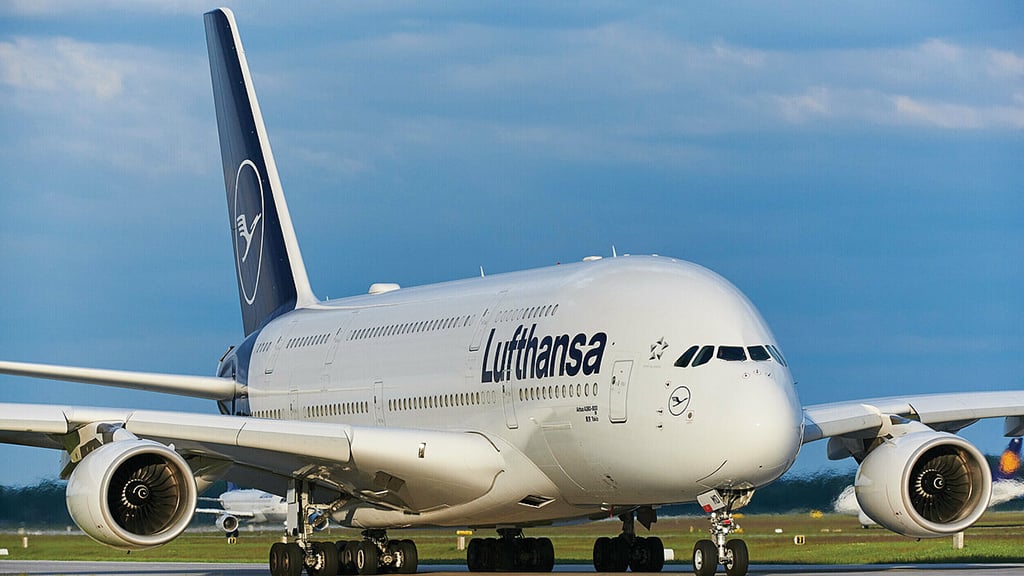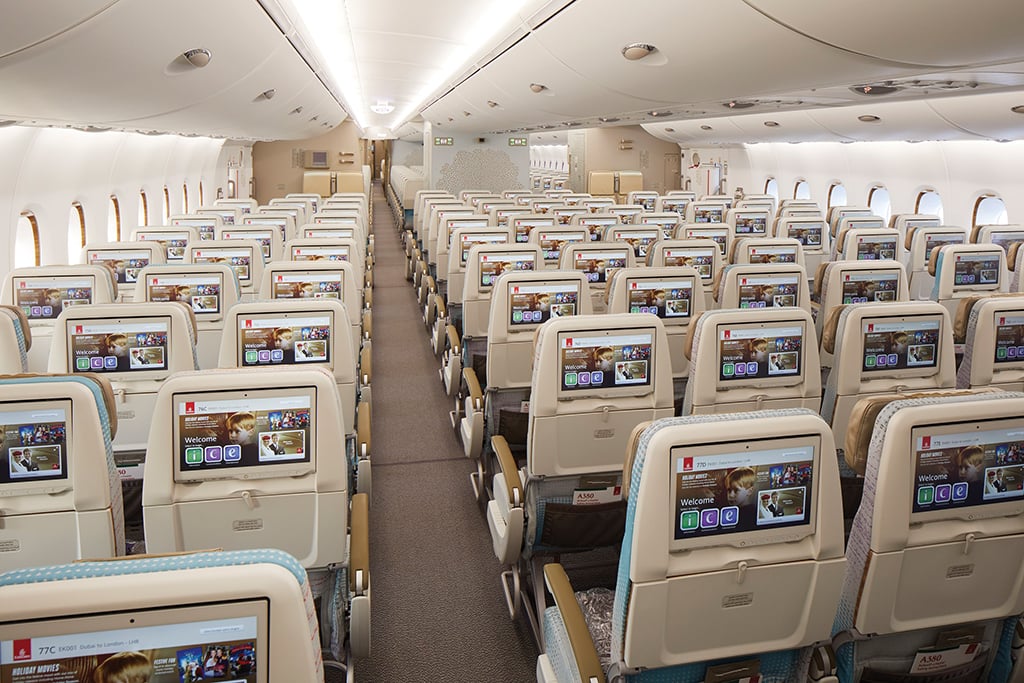Older-Aircraft Life Extensions Prompt Interior Upgrades

Virgin Atlantic recently launched upgraded Thompson Aero Seating Vantage XL+ business-class seats on its Airbus A330-900neos.
Within the ebb and flow of the MRO world, the cabin interiors segment is experiencing a rising tide. Availability pressures in the narrowbody market, complexities in the aircraft leasing business and specific generational demand factors for important widebody aircraft types mean the high-water mark is in sight, but the MRO wave for interiors has not yet peaked.
At a macro level, narrowbody availability pressures—related to the Boeing 737 MAX grounding, delays in certifying the MAX 7 and MAX 10, production delays for the longer-range versions of the Airbus A321neo and the A320neo family’s ongoing engine production and reliability woes—are driving retention of older aircraft.
“As we look to the long term, Boeing sees a demand for over 42,500 new jet deliveries over the next 20 years, with 76% of those being for single-aisle airplanes,” says Chris Shindle, Boeing’s senior leader for cabin, features and experiental marketing. “We have seen airlines hold on to airplanes longer since some of the usual paths for fleet exit weren’t as viable during the pandemic.”
The consequence, Shindle says, is that “near-term demand in the industry has outpaced supply, with both Boeing and Airbus affected by supply chain issues. In addition to taking deliveries of new 737 MAXs and A320neos, operators have retained their older, prior-generation airplanes, like 737NGs and A320ceos, to meet this strong demand. Many carriers have continued to invest in their older products with the intent of keeping them in their fleets longer than originally planned.”
This situation varies somewhat depending on regional factors and can have knock-on effects on other regions. In the U.S., for example, fleets of 737NGs and A320ceos that were expected to be replaced by newer MAX and Neo aircraft have been retained, which means that the older equipment that would have cascaded down for sale or lease in emerging and developing markets has not done so.
Impacts To Leasing And ACMI Markets
Consequential effects are also being felt within wet leasing and ACMI (aircraft, crew, maintenance and insurance) operations, explains Denis Brailsford, head of asset management at appraiser IBA.
“Where there is a lack of aircraft, ACMI leases have traditionally been used,” Brailsford says. “This was common in the charter holiday market, with ACMI operators filling some of the capacity. With the lack of supply, we are seeing ACMI operators being used more extensively by full-service carriers, with Swiss and SAS heavily reliant on ACMI suppliers.” Airlines struggling with new-engine reliability issues are also turning to the ACMI market, he says.
With airlines retaining older aircraft longer, this “is driving more comprehensive reconfiguration activity,” says Doug Rasmussen, HAECO Cabin Solutions’ president and group director. He says “airlines that postponed new aircraft orders are the most impacted by this trend.”
HAECO is seeing more demand for interior reconfigurations for Airbus A320s and Boeing 737s narrowbodies as well as A330 and 777 widebodies. “The trend started in North America, Europe and the Middle East but has now started to extend to the Asia-Pacific,” he adds.
The reconfiguration—and in some cases retention—of smaller widebodies like the Boeing 767 and Airbus A330 is linked to the narrowbody supply shortage. Some airlines that had expected to operate the A321XLR version of the A320neo family are left to either postpone their plans or run flights with their smaller widebodies. While many of these have lower financing costs, there are substantial impacts on markets elsewhere.
To some extent, pressures from longer-term ACMI contracts in certain markets have been reduced due to the overflight bans of Russia following that country’s 2022 full-scale invasion of Ukraine. For example, since the ban has structurally altered Finnair’s polar route business model, the airline has been doing a notable amount of ACMI flying for other carriers, including British Airways.
To be sure, ACMI flying creates inconsistencies between the onboard product advertised and the product passengers actually see. While the passenger experience differences between services on a British Airways A320 and one operated by Titan Airways, Avion Express or Finnair may be minimal, they exist.
For example, IBA’s Brailsford highlights that “connectivity and in-seat power is becoming the norm and as a result can be a differentiator between rival airlines.”
Given these concerns, light-touch refits adding these options are becoming increasingly attractive.
Boeing 787 Upgrade Challenges
Interior modifications and upgrades of early 787 deliveries are peaking, with substantial pressure on MRO providers as airlines seek to update their interiors. From the passenger experience perspective, early-build 787s in particular suffered from numerous program delays. These include the three-year delay from the initial intended entry into service in 2008, four years after program launch in 2004, as well as the grounding of the aircraft in 2013 for battery issues, compounded by the Rolls-Royce Trent engine problems that prevented some airlines from using their fleets a few years later. The result of these delays, in cabin terms, was that early-build 787s configured in the early to mid-2000s launched only in the mid-2010s, and in some cases without the opportunity to upgrade their seats.
The consequences were particularly acute in business class, where expectations accelerated quickly from the mid-2000s standard of fully flat beds without direct aisle access to the mid-2010s standards of direct aisle access for every passenger.
Brailsford highlights what he calls the “vast difference” between Virgin Atlantic’s Upper Class Suite direct-aisle access product on its A330-300 fleet, which was designed in the early 2000s, and the Thompson Aero Seating Vantage XL+ seat recently launched on its A330-900neo.

“The same can be said for British Airways and its business-class products on the 787-9 and 787-10,” Brailsford says. The aircraft are being line-fit with the Collins Aerospace Super Diamond seats in an outward-facing herringbone pattern with direct aisle access, while the airline’s earlier 787s are still flying with yin-yang forward-backward seats manufactured by Collins in the mid-2000s.
Airlines experience pressures that constrain cabin upgrades, Brailsford explains, because they “are a costly investment for what may be a short period of time. Most aircraft leases run for a 12-year period, with cabins lasting around 8-10 years. Therefore, it is difficult for operators to justify major upgrades without extending lease terms.” He adds that if operators extend lease terms, the airlines not flying the latest-technology aircraft face impacts to their image—and so do lessors.
“Newer-style cabins are more remarketable and therefore, if in the correct configuration, can improve future lease rentals,” Brailsford says. “However, this is highly subjective, as some operators will want their own cabin installed to match their current operations, meaning these changes may not be accepted.”
Some airlines may own some or all of the intellectual property within their business- and first-class seats, while no-compete clauses are relatively common within launch customer contracts for business-class products, which means that reconfiguration to the onward operator’s standard business class—or a more generic product—is required.
More widely, “we have noticed a growing interest in major reconfiguration programs for older 787s,” HAECO’s Rasmussen says. “Given the numerous new technologies that were introduced in this airframe, these programs will necessitate close collaboration with the original aircraft OEM.”
Kate Schaefer, Boeing’s vice president for commercial modifications, engineering and specialty products, says: “The strong demand we are seeing for 787 interior modifications reflects a combination of expected cabin upgrades and modifications related to ongoing market recovery and demand. The 787 customer base is diverse, and interior reconfiguration needs vary by customer.”
This peak of interest will inherently have knock-on effects for the MRO sector, with hangar space, experienced staff and 787-specific equipment all in high demand. Outside of Boeing’s immediate orbit, the airframer faces some criticism around a closed-system design that adds complications.
“Upgrading the 787 aircraft is difficult by design,” explains Pierre Michard, director for sales and programs at lighting and safety systems supplier STG Aerospace. “Most system changes require inputs from Boeing, which keeps the market very close. We have had multiple requests from 787 operators, but at the moment we cannot satisfy that demand easily.”
Gary Weissel, managing officer at Tronos Aviation Consulting, concurs, highlighting that “the biggest problem here is that for upgrades you’re basically forced to go back through Boeing for the engineering and certification due to the data access issue. It is very expensive and limits competition in the market for modifications.”
Adding further complexity, OEMs are expanding their own in-house services businesses and are taking an increasingly dim view of industry consolidation and the influence now wielded by larger suppliers such as RTX and Safran.
A related issue, Weissel says, is workload volumes for modifications. “When more of the fleet requires cabin upgrades and Boeing is your only source for engineering and certification, will Boeing have the capacity to handle the workloads? Thus far, the OEMs have been reluctant to license significant data use to third-party firms to engineer and certify major interior reconfiguration work,” he says.
Schaefer acknowledges that “as the commercial market continues to recover and grow, capacity to support demand for interior modifications remains a challenge not just for the 787, but industry-wide. We are taking comprehensive actions to strengthen our capabilities to ensure we have sufficient capacity to meet the needs of our customers.”
Airbus A380 Lifespan Extension
Across the Atlantic, a similar yet highly nuanced demand spike is driven by the A380’s return to service and lifespan extension work. Airlines including Lufthansa and Etihad Airways are bringing their superjumbos back to meet higher-than-expected demand, creating pressure on the limited capacity of facilities, staff and tooling for A380 retrofits and overhauls.

“It’s a small fleet of aircraft that will be upgraded, so no one else wants to make such a huge investment to work on the A380 for small numbers of aircraft,” Weissel says. “In the time and effort needed to complete a single A380 upgrade, including taking up valuable hangar slots, an MRO or integrator can do multiple other narrow- and widebody programs.”
The double-decker elephant in the proverbial hangar is Emirates’ intention to fly its A380 fleet as long as possible. It is well underway with installing new premium-economy seats and performing relatively light upgrades to the rest of its fleet. While Emirates has more than 100 A380s, it has a limited number of configuration subfleets, limiting the number of modifications—and thus the need for investment in staff, skills and facilities—while still requiring a large amount of hangar space.

Fundamentally, Weissel explains, “Airbus is doing whatever it can to keep that platform flying. With no one else jumping in to do the modifications, Airbus must step in to do it.”
Tim McVea, Airbus’ deputy head of marketing for upgrades and sustainability services, says: “It’s important to us that operators can adapt and enhance their Airbus aircraft as their needs change and passenger expectations evolve.” Airbus offers service bulletins, supplemental type certificates and support throughout projects. “We are always sending Airbus teams to the chosen MRO to support complex project embodiments,” he says.
These teams generally comprise engineers responsible for creating service bulletins, process experts and specialists with type-specific expertise. Operating in many ways as an on-site advisory service, they can answer questions from the operator, owner and MRO around processes and service bulletins, as well as address any issues around documentation and kits that the OEM supplies.
Airbus has “many, many initiatives to work with MROs for all types of projects and considers these organizations a crucial part of the modification ecosystem,” says McVea.
Ongoing Challenges
Numerous sub-macro-level challenges, often tightly interwoven, remain at the intersection between fleet upgrades and interiors MRO.
Information flows and data availability, particularly for airframes built since 2000, are a key blocker, explains Tronos’ Weissel, because airframers are keen both to expand their modifications and to upgrade their markets. “They have somewhat of a monopoly because they control all the aircraft design data and have been extremely guarded with that data, so if you need to modify your aircraft, you almost have no choice but to go back to the OEM, as they’re the only ones that can do the engineering and certification for changes, since no one else has access to any of that data,” he says.
Ongoing issues around the supply chain—including Tier 1 suppliers and fundamental component parts, particularly where newer materials like specialized alloys or composites are involved—are also roadblocks.
“Although the supply chain challenges have started to diminish, stability in this area remains essential to guarantee the dependable delivery of interior products and the successful execution of cabin reconfiguration programs,” says HAECO’s Rasmussen.
Segment-specific issues also remain. “Qualification requirements from one integrator to the next, even on the same platform, are still different,” says STG’s Michard. “We find the business jet market clearer on that side, as their qualification requirements tend to be DO-160G only. My favorite headache remains data buses. We have Ethernet, CANbus, RS485, CIDS, CSS, GCMS and a few other different flavors. Having a more universal interface would be helpful to speed up technology transfer from one part of the market to another—business jet to commercial, for example,” he adds.




